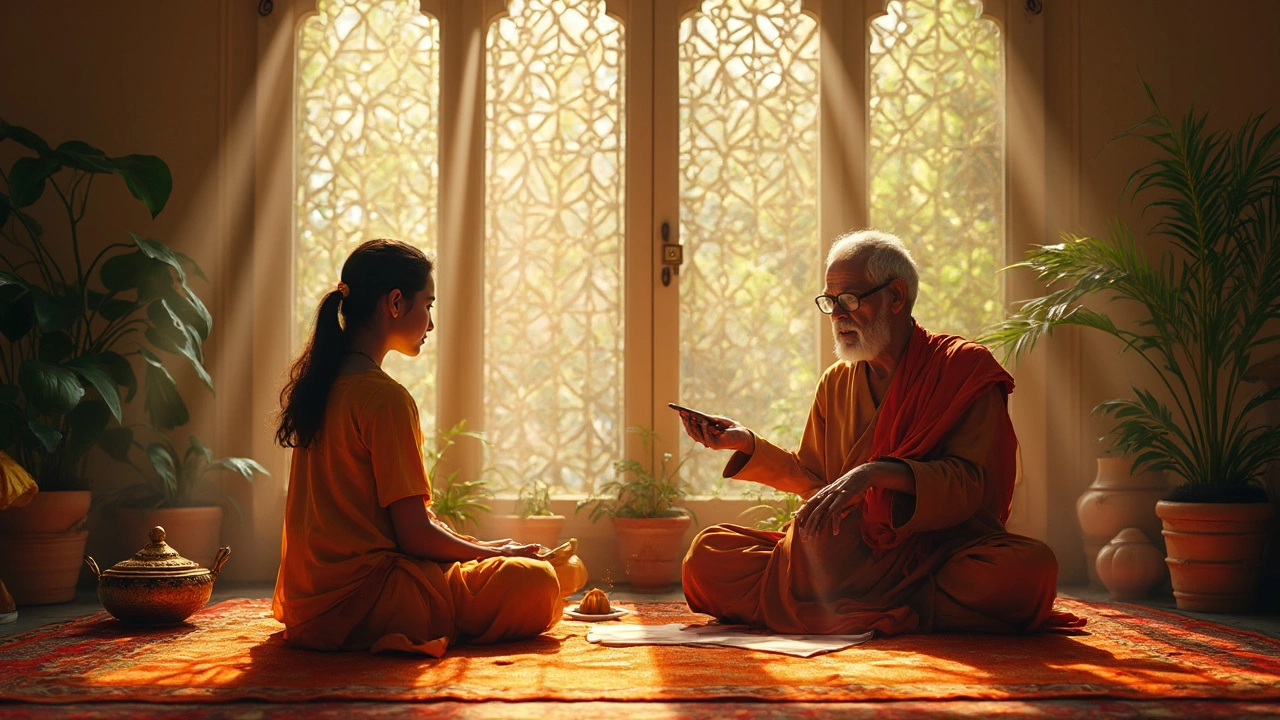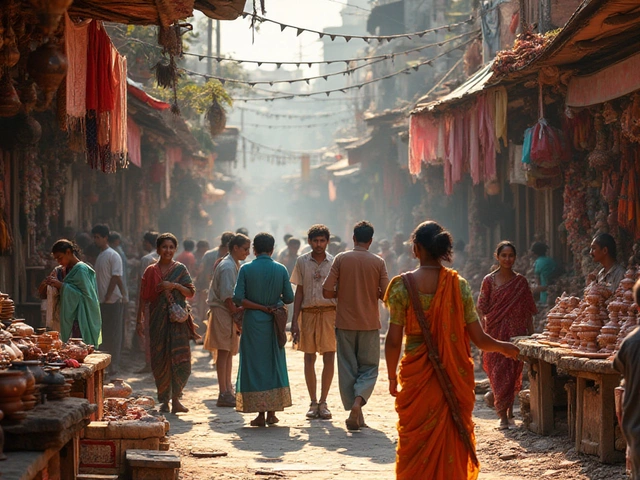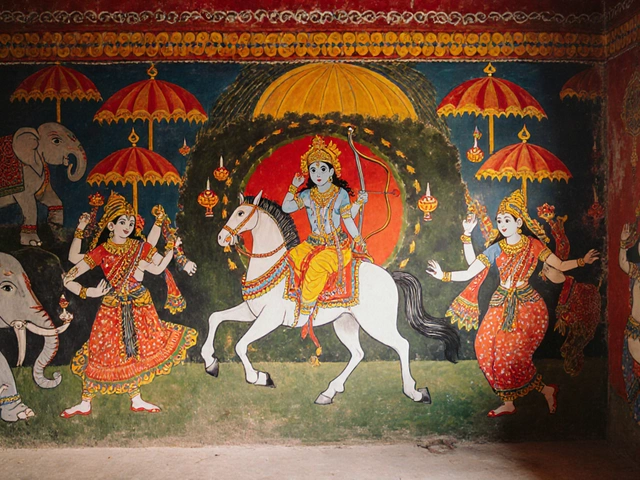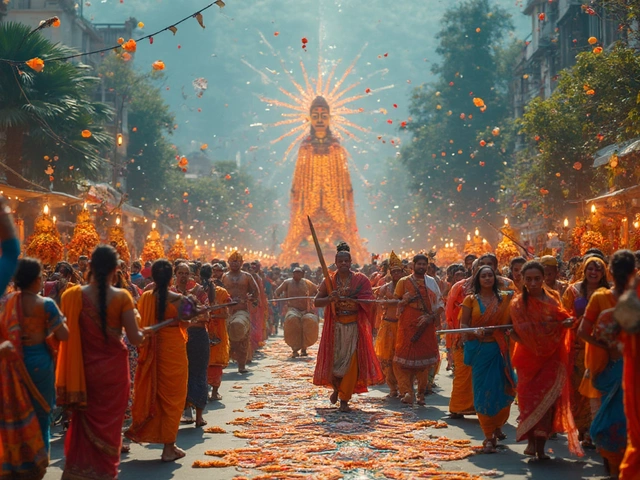Ever wonder if you could pick up Carnatic music in just a couple of years? The reality is: this isn’t a quick skill. Unlike learning a pop song on the guitar or memorizing a few lyrics, Carnatic music runs deep—it’s packed with technique, theory, and tradition that go back centuries.
If you walk into your first class expecting to perform on stage next year, you’ll probably be disappointed. Mastering the basics like swaras (notes), talas (rhythms), and the all-important sense of shruti (pitch) alone can take a year or more of steady practice. Even the fundamentals—simple exercises like Sarali Varisais and Janta Varisais—aren’t just warmups. They’re where your real muscle memory gets built, and most teachers won’t rush you past them.
Curious why it takes so long? There’s a lot to unpack. The tradition values depth over speed, and learning usually means sitting at your teacher’s feet (even virtually), repeating, correcting, and repeating again. And let’s be honest: some days, the progress can feel maddeningly slow. But building that foundation is everything—mess that up, and you’ll struggle no matter how many years you put in.
- Not a Quick Fix—Why Carnatic Music Takes Time
- Stages of Progress: From Sa Pa Sa to Sabhas
- What Can Speed Up (or Slow Down) Your Journey
- Tips to Make Every Year Count
Not a Quick Fix—Why Carnatic Music Takes Time
So, why does Carnatic music demand so many years? The answer boils down to three things: depth, detail, and discipline. First, the style comes with a layered system—there’s no skipping the basics. Learning even the simple scales, called varisais, is a must before you dream of singing an actual song.
Each student starts with exercises like Sarali, Janta, and Alankara varisais. These might sound repetitive at first, but they build your foundation. Just mastering these can take 6 to 18 months of regular practice. Your teacher will want you to nail pitch and rhythm; get those wrong now, and you’ll regret it when you try the tougher compositions later.
The theory part is no joke either. You’ll have to pick up on raga (melodic frameworks), tala (rhythm cycles), and the mind-bending concept of gamakas (microtonal slides and oscillations). Unlike Western music, it doesn’t stop at reading notes—most learning happens through listening, watching, and repeated singing.
Carnatic music is tradition-heavy. That means every lesson is passed down “by ear”—no shortcuts, no instant YouTube hacks. Learning an original kriti (composition) is much more than knowing the tune; you study the language, the composer, the lyrics, and the story behind it. That’s why it’s not rare for someone to spend five years before they’re comfortable performing in front of an audience, even at a local level.
- The average timeline to get basic comfort (singing simple songs): 2-3 years
- Getting stage-ready for advanced compositions: Often 7-10 years
- True mastery, where improvisation and complex ragas feel natural: Lifelong process
Nothing fast-tracks this journey. You’ll see stories about prodigies, sure, but most students and even established artists confirm: it’s the steady, often slow climb that eventually pays off.
Stages of Progress: From Sa Pa Sa to Sabhas
Every beginner in Carnatic music starts with the basics—literally repeating "Sa Pa Sa" until the sound is burned into your head and your voice can hit those notes without flinching. This isn’t just vocal exercise; it’s the root for everything that follows. Don’t expect to fly through this stage. Most students spend six months or more just getting their ears tuned and their voices stable.
After you nail the basics, you move on to exercises called varisais and alankarams. These sound simple, but there’s a lot going on: you’re learning to match pitch, keep time to the tala (rhythm), and start understanding raga structure. Here’s a rough idea of what the typical journey looks like:
- Year 1–2: Fundamentals—Sarali Varisais, Janta Varisais, Alankarams. You’ll also start your first simple songs, like geethams and swarajatis.
- Year 2–4: Building blocks—More complex pieces like varnams and kritis. You’ll start using your voice or instrument with real control. Manodharma (basic improvisation) might just start showing up here if you’re lucky and diligent.
- Year 5+: Advanced—Kritis by Tyagaraja, Syama Sastri, and Dikshitar bring serious depth. Improvisation and performance become a big part of your routine. This is usually when you might get your shot at a small public performance—what folks call a "debut concert" or arangetram.
It’s common to wonder: When can you perform at an actual sabha (concert platform)? For most, it takes 7–10 years of consistent music training before you even get considered. Teachers are picky about who gets on stage, especially at respected venues.
Want to see the big benchmarks at a glance? Here’s how the timeline often pans out for regular students who learn at a steady weekly pace:
| Learning Stage | Typical Duration | Main Focus |
|---|---|---|
| Basics (Varisais, Alankarams) | 1-2 years | Pitch, Rhythm, Foundation |
| Intermediate (Geethams, Varnams) | 2-4 years | Technique, Memory, Theory |
| Advanced (Kritis, Manodharma, Concerts) | 5+ years | Improvisation, Performance, Depth |
No one’s path is the same—some might zip through these stages while others get stuck and need to go back. What matters most is honest practice, sticking with it, and being open to feedback, even if it bruises the ego a little.

What Can Speed Up (or Slow Down) Your Journey
The speed at which you learn Carnatic music isn’t set in stone. There are real factors that can put you on the fast track—or hold you back for years. Knowing them helps you plan smarter and avoid common roadblocks in your music training.
First up, age matters. Kids usually pick up new stuff faster, especially when it comes to ear training and pronouncing Indian lyrics. But that doesn’t mean adults can’t do well. Adults just need a bit more patience, as old habits can be tough to break and time’s always tight.
How often do you practice? That’s a game-changer. Most teachers recommend daily practice of at least 30–60 minutes if you’re serious. Miss too many days and you’ll keep re-learning old lessons, wasting precious time. On the flip side, regular practice—even just half an hour every day—builds up faster than cramming on weekends.
Your teacher is a huge factor, too. A good guru spots mistakes early and explains tough bits in ways you get. Students who have teachers giving real feedback—rather than just group classes or video learning—tend to advance faster in Carnatic music.
Motivation is big. Are you practicing because you have an upcoming performance? Or are you just ticking boxes? Real improvement usually happens when you actually care about the music. You’ll find yourself listening to top artists, trying to copy alapanas, and asking smart questions. That’s when you see faster progress.
- Health: Catching a throat infection or straining your voice? Those issues can set you back for weeks. Protect your voice like it’s gold.
- Surroundings: Family support is underrated. If people at home encourage your practice, you’ll stick with it longer. If not, it’s way harder.
- Access: With the amount of Indian classical music content on YouTube, you can now watch and learn from pros for free. That’s something learners in the ‘90s would’ve dreamed of, so use those resources to your advantage.
Check out this quick comparison to see how different factors can add or cut years from your Carnatic music journey:
| Factor | Fast Track | Slow Lane |
|---|---|---|
| Practice Consistency | Daily | Once a week or less |
| Teacher Quality | Personal feedback | Mainly group/video lessons |
| Family Support | Encouraging, patient | Distractions, pressure to quit |
| Learning Resources | Access to recordings & concerts | Limited exposure |
Your journey in Carnatic music is personal, but these are the things that either help you pick up speed—or leave you stuck at the basics. Find what works for you, cut out what slows you down, and remember everyone's progress is different.
Tips to Make Every Year Count
Here’s the straight talk: making solid progress in Carnatic music depends on how smart you work, not just how many hours you clock. You’re not in a sprint to finish, but you don’t want to look back in five years and realize you’ve just been spinning your wheels. Want to see real growth? Check out these tried-and-true tips that top students and even teachers swear by.
- Daily Practice, Even Short: Doing a quick 20 minutes every day beats cramming two hours once a week. Consistency trains your ear and builds real muscle memory.
- Record Yourself: Most beginners cringe at their first recording, but this is the best way to notice your mistakes and track how far you’ve come. Even pros do it.
- Keep a Learning Diary: After each lesson, jot down a few lines—what felt hard, what clicked, any tips your teacher gave. This keeps your progress (and struggles) organized so you don’t repeat the same mistakes.
- Focus on Listening: Listening to live concerts and classic recordings is non-negotiable. You’ll naturally pick up raga nuances, creativity in alapana, and how seasoned performers handle tricky talas.
- Break Down Pieces: Instead of practicing a whole kriti in one go, break it into segments. Work on sangatis or tricky lines separately. This is how even advanced folks nail the details.
Did you know? A 2022 survey among Indian classical music students found those who practiced less than four days a week took nearly twice as long to finish their first full varnam compared to those who practiced six days a week.
| Practice Frequency | Avg. Time to First Varnam |
|---|---|
| 6 days/week | 18 months |
| 3 days/week | 34 months |
Don’t just chase after how many new songs you can learn—focus on nailing shruti, getting your tala rock solid, and making sure each new piece is better than your last. Good habits in your first year stick with you for life. And don’t forget—there will always be more to learn, but every year you spend actually matters if you’re paying attention and putting in the work.





